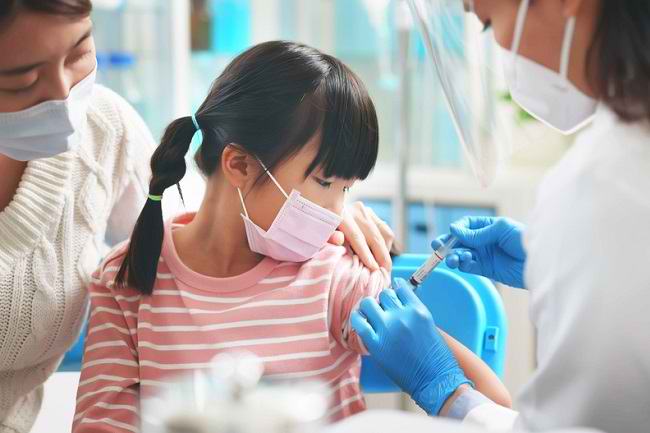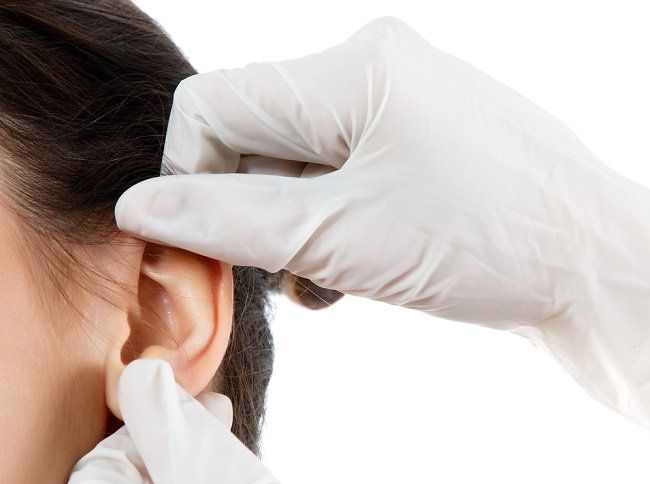HPV DNA testing is a procedure to detect HPV infection (human papillomavirus) high-risk type in women. This type of HPV infection can trigger abnormal changes in cervical cells that have the potential to become cervical cancer or other types of cancer, such as vaginal cancer and anal cancer.
HPV DNA examination is done by taking a sample of cells from the cervix (cervix). The sample will be examined in a laboratory to determine whether there is genetic material (DNA) from HPV in cervical cells.

Please note, this test is only to detect infection with high-risk HPV types and cannot be used to diagnose health problems caused by low-risk HPV types, such as genital warts.
The HPV DNA test has the same goal as the Pap smear procedure, which is to detect cervical cancer early. Therefore, this examination is usually combined with a pap smear.
Indications for HPV DNA Test
Women aged 30–65 years are recommended to have a routine HPV DNA test every 5 years, combined with a Pap smear procedure.
In addition to women with this age range, HPV DNA testing is also recommended for women who have the following risk factors for cervical cancer:
- Suffering from HIV
- Have a weak immune system
- Exposed to exposure diethylstilbestrol (DES) before birth
- Getting high levels of abnormal results (precancerous lesions) on pap smears
Generally, HPV infection does not cause any symptoms or signs, so the patient does not know that he has been infected with HPV. Therefore, HPV DNA examination needs to be done routinely with the following objectives:
- Detecting cervical cell abnormalities and HPV infection in women aged 30 years and over
- Further detection of the presence of high-risk HPV types in patients with pap smear results showing abnormal cervical cells
- Checking for abnormal cervical cells after treatment for high-risk HPV infection
HPV DNA Screening Warning
HPV DNA testing is not recommended for women younger than 30 years. This is because most HPV infections at that age do not develop into cancer. In this case, the HPV DNA test can be delayed or replaced with a pap smear.
HPV DNA examination should also not be done while menstruating because it can affect the results of the examination.
Before HPV DNA Test
Before the HPV DNA test begins, the patient will be asked to urinate to empty the bladder. This is done for the convenience of the patient during the examination and the smoothness of the examination process.
In addition, there are several things that should be avoided for 24 hours before the HPV DNA test, namely:
- Have sexual intercourse
- Do douching, namely cleaning the vagina using feminine care products that are sprayed into the vagina
- Using vaginal medications, such as cleansing creams or soaps
- Inserting anything into the vagina, such as using a tampon
HPV DNA Test Procedure
HPV DNA testing can be done at the nearest clinic or hospital. This check will generally only last a few minutes. The following are the stages carried out in the HPV DNA examination:
- The patient will be asked to remove his pants or skirt and underwear, then lie on his back with his knees bent and his legs raised and supported by a support.
- The doctor will insert an instrument called a speculum into the vagina, so that the walls of the vagina are exposed and the doctor can examine the inside of the vagina and cervix. This stage can cause discomfort in the lower abdomen.
- The doctor will take a sample of cells from the cervix using a special brush or spatula. After that, the sample will be put into a small tube and then taken to the laboratory for analysis.
After HPV DNA Test
After the examination, the patient can immediately carry out activities as usual. The doctor will make an appointment with the patient to discuss the results of the examination on another day. The results of the HPV DNA test are generally completed within 1-3 weeks after the examination.
There are two types of HPV DNA test results, namely negative and positive. If the results of the HPV DNA test are negative, the patient is declared not to have the type of HPV associated with cancer. Conversely, if the test results are positive, the patient can be declared to have high-risk HPV types that have the potential to become cervical cancer.
There are several types of HPV that are often associated with cervical cancer, namely HPV-16, HPV-18, HPV-31, HPV-33, HPV-35, HPV-52, and HPV-58.
Please note, the results of the HPV DNA examination do not show the patient currently has cancer, but as a warning that cervical cancer can appear at any time.
By knowing that the patient is at risk for cervical cancer, the doctor can carry out further monitoring and examination, as well as determine the appropriate treatment. Some further checks that can be done are:
- Colposcopy, to examine the condition of the cervix more closely using a special magnifying lens
- Biopsy, to take a sample of cervical cells, so they can be examined in more detail with a microscope
- Removal of abnormal cervical cells, to remove tissue containing abnormal cervical cells, so that abnormal cervical cells can be prevented from developing into cancer cells
Side Effects of HPV DNA Test
HPV DNA testing is a safe procedure. Only in certain cases, HPV DNA testing causes the following side effects:
- Discomfort in the lower abdomen that resembles menstrual cramps
- Light bleeding for 1-2 days after examination









